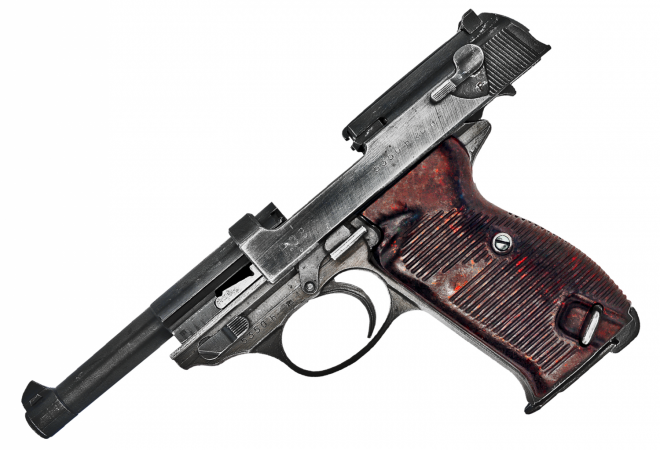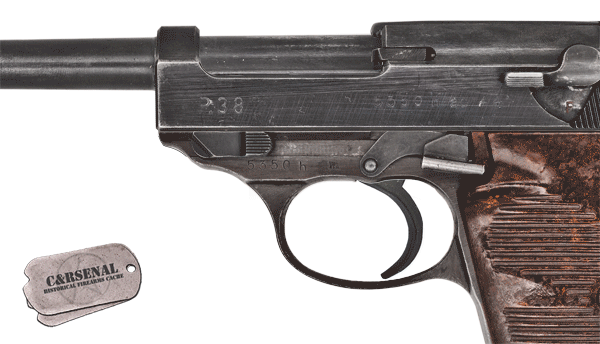I’ve already posted my P38 Anatomy image but let’s get a little deeper into this revolutionary German WWII classic.
The shortest possible story of the Walther P38 goes like this: Before WWI Walther was known for its high quality, blowback operated, small cartridge firearms. During WWI it produced the popular Model 4 for the German military. Post war the Treaty of Versailles forced Walther to stay at or below .32ACP. This did not stop them from designing the amazing Walther PP and PPK pistols. These used a great double/single action system with decocker that made them ideal for carry. Attempts were made in secret to develop a 9mm Parabellum pistol for more lucrative military contracts. The first attempt was an over-sized Model PP but blowback wasn’t cutting it. Fritz Walther and Fritz Barthlemens solved this with their patented wedge-locking action. A single/double action, wedge locking, hidden hammer pistol was submitted to the German authorities just before WWII. They loved it but demanded an external hammer, which was provided shortly. The rest is military history and explained in better detail back at C&Rsenal.
Now, a lot has been said about the trigger and safety on the P38, but let’s look closer at that wedge lock. It is attached and hinged under the barrel. This wedge has two small lugs on either side, pointed upwards. When raised, these lugs fit in matching channels cut in rails milled inside the slide, thus locking the barrel and slide together. Also under the barrel is a sturdy floated pin, seated behind and with its dull spear-like tip pointing into the the wedge. The wedge is held up by the shape of the inside of the pistol frame when at rest.
Now, when we fire the P38, the barrel, slide, wedge, and pin travel rearward together in the locked position. But, the inside of the frame soon opens up, allowing the wedge room to drop. To make certain this happens the floated pin is positioned so that it will strike the vertical step in the frame first. When it does it is driven forward as the block housing it collides and brings the barrel’s rearward travel to a halt. The pin separates the rear of the wedge from the barrel, hinging it downward. This lowers the locking lugs at its top, freeing the rails milled in the slide. So the slide is free to continue with its momentum rearward, opening the breech. Returned by the recoil springs, the slide reconnects with the barrel and shoves it forward. As the front of the wedge is dragged along the inside of the frame it slopes upward, hinging it up, back into lock. The wedge’s shape squeezes the floated pin rearward, resetting it as well.
That’s a whole lot of description for a simple operation that happens in the blink of the eye. Of course there are many other operations in the gun considering the trigger, sear, hammer, safety, feeding, extraction, etc. But we see those designs repeating on into a future of small arms design based on this very modern pistol. I just wanted to take a moment and appreciate this unique locking action and I hope you all find it as fascinating as I do.
 Your Privacy Choices
Your Privacy Choices

